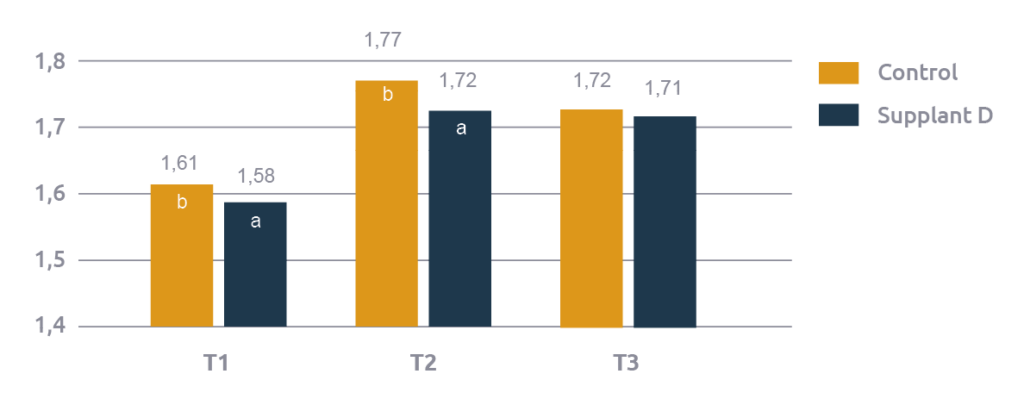Driven primarily by consumer demand, the subject of achieving antibiotic-free production is on debate around the world, with Europe in the lead to achieving this goal. An antibiotic-free production concept necessitates a different approach, one focused on reducing stress in the poultry industry. As a result, phytogenic products are becoming increasingly popular to manage oxidative stress in the production process.
Global population growth is increasing the need for animal protein, adding pressure to the production processes. Production managers can observe and solve many antibiotic-free rearing challenges by managing feed/water intake, controlling biosecurity procedures, and monitoring environmental conditions. However, there are invisible challenges on-farm that are harder to detect. These inevitable challenges, if ignored, result in poor performance and reduced revenues. A few examples are:
- Oxidative stress
- Nutrient assimilation
- Intestinal integrity
- Immune response efficiency
- Inflammatory balance
- Microbial balance
- Gut function and permeability
Oxidative stress and the inflammatory process
Oxidative stress results from a variety of stressors that cause cells to produce reactive oxygen species (ROS), which are toxic to cellular proteins, lipids, and even DNA. As a consequence, ROS activates the nuclear factor kappa B (NF-kB), a protein complex that controls cytokine production, DNA transcription, and facilitates cell survival. Once triggered, NF-kB initiates the production of inflammatory factors, adhesion molecules, and enzymes to result in inflammation and cell death. When inflammation is present, the body requires excessive energy for maintenance at the expense of growth, thus causing poor performance.
Conversely, nuclear factor-erythroid factor 2-related factor 2 (Nrf2) is a counterpart of NF-kB. By serving as an oxidation and reduction sensitive transcription factor, NF-kB positively regulates the expression of antioxidant and detoxification enzymes like superoxide dismutase, catalase, and glutathione peroxidase. These eventually lead to alleviating oxidative stress. In this regard, specific phytogenic compounds can manipulate Nrf2 and NF-kB transcription factors, encouraging an oxidative stress defense instead of simply suppressing the inflammation process. By modulating an animal’s immune response through different pathways, ultimately, there is improved animal health and performance.
The application of phytogenics
Phytogenic compounds have been broadly studied in the last few decades as alternatives to synthetic growth promoters. These studies show phytogenics to benefit metabolism, enhance digestion (Hernandez et al., 2004), stimulate an immune response (Gessner et al. 2013), mediate inflammatory potential (Acamovic and Brooker, 2005), as well as afford strong antibacterial, antioxidant, and antimicrobial/antiparasitic properties (Christaki and Giannenas, 2012).
Three experiments were conducted on male hatched broiler chicks using Supplant D. By employing select phytogenics to combat NK-kBs, Supplant D saves energy for protein metabolism and utilization. It does this by restoring the balance between pro-inflammatory and antioxidant factors. This study investigated the role of phytogenic antioxidants in oxidative stress reduction.
In the study, the Supplant D group outperformed the negative control group in terms of growth gains over weeks 2, 4, and 6 (Graph 1). The final live weight of the Supplant D group was on average 93 grams or 3.6 percent higher than the negative control group. The main effects were realized in the finisher phase.

abBars with different superscripts are different (P< 0.05)
Similarly, the Supplant D group achieved better feed digestibility, significantly reducing feed conversion ratio (FCR) by 1.7 percent compared to the negative control group (Graph 2).

abBars with different superscripts are different (P< 0.05)
As a result, the phytogenic molecules in Supplant D considerably enhanced the zootechnical parameters in terms of FCR and growth gains, implying the birds are healthier and less stressed by challenges or abnormal conditions.
Conclusion
Supplant D illustrates how natural and natural-identical plant-derived functional feed ingredients can benefit animal performance by reversing the pro-inflammatory effects of ROS and inflammatory cytokines. Learning how they work will help utilize these phytogenics in feed rations. In this regard, there is much progress to be made on the relationship between different types of phytogenics. With each discovery, we gain a better understanding of what drives essential cellular processes, opening up new areas for further exploration and performance improvements.